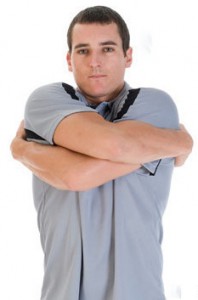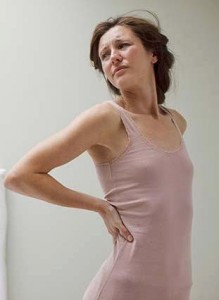There is much I don’t understand. When it comes to the body I have no formal training outside of a yoga certification and a few week long teacher trainings. I opened a yoga center in Brooklyn soon after starting to teach and began my journey to understand the body without having much to fall back on.
This suited me well in a strange way. I had some very smart students who challenged me in great ways and didn’t make me feel bad about the fact that they actually knew a lot more than me (I mean you Lauree Wise, among others, if you are out there). I felt very free to explore and figure things out and over time really found my groove. And the groove came from learning to trust my intuition. Ten years later that’s what I have going for me—a rock solid trust in what I intuit as I look at someone’s moving body.
It is hard to have an open mind. Fear and insecurity nip closely at the heels of innovation and it was not always easy to have faith in my ability to learn in the long run. I have written before about how I am a slow learner (something I am seeing with my daughter and working on honoring that trait), and that too was difficult to process in front of a class. I was learning on the fly taking in so much about people and how they moved and more than anything— about how they hurt.
The opening year or two at my first yoga center was really my teacher training, and those early students were guinea pigs in an experiment that I think has turned out well.
One of the things that I noticed early on in terms of stretching—people very often do exactly the opposite of what they need when trying to bring relief to tight achy muscles. It took me a long while to figure out why but I think I did, though feel free to opine otherwise.
The picture at the top left is a classic stretch that people who have weak rhomboids tend to do. People with a sore back tend to put their hands on the small of the back and lean backwards. For me both of these actions are the opposite of what the body needs in these instances.
Someone with weak or long rhomboids tend to get very tired in and across the upper back. What these muscles actually need is to engage and shorten to counter their looseness. Instead the person in the picture above is actually over-stretching already over-stretched muscles. While this does bring a momentary sense of relief to the over burdened muscles it does nothing to address what is actually going on in the back.
It is similar in the case of people with lower back pain that lean backwards. Almost everyone is living with tight lower back muscles. That doesn’t mean that everyone is in pain but it is the nature of our posture. These tight lower back muscles are intimately connected to the pain and discomfort that people are experiencing in their back. Leaning backwards into these tight muscles shortens them further and this flexing of already short and tight muscles more only gives the illusion of relief. You know it is an illusion because if you are one of the people who do this, you likely do it every ten minutes or so.
Next time you reflexively stretch something that aches or hurts, pay attention to what you have chosen to do and try to discern if it is the best thing for your body.


